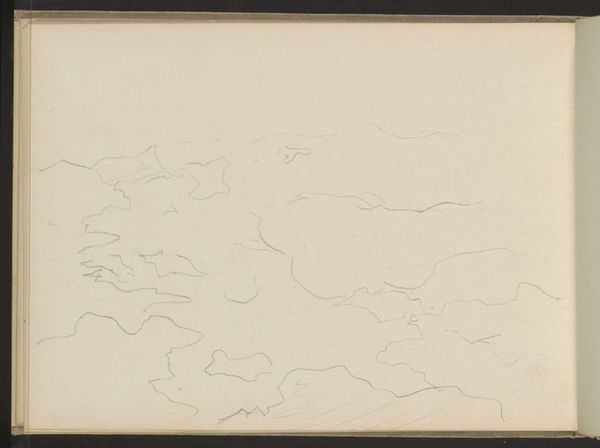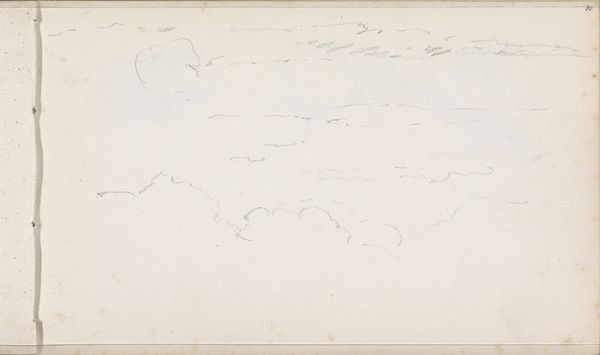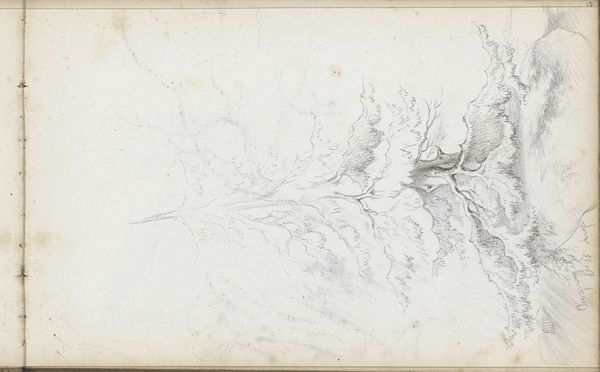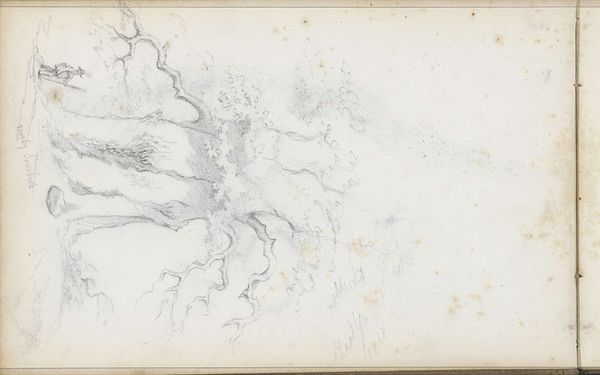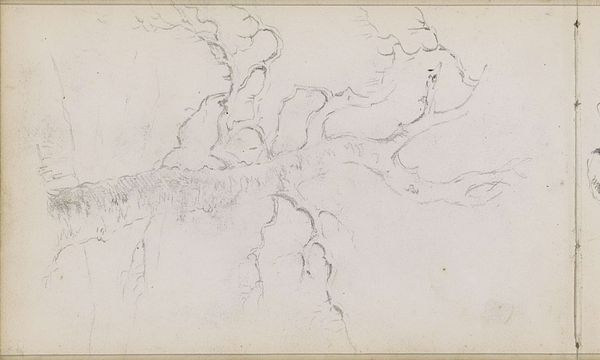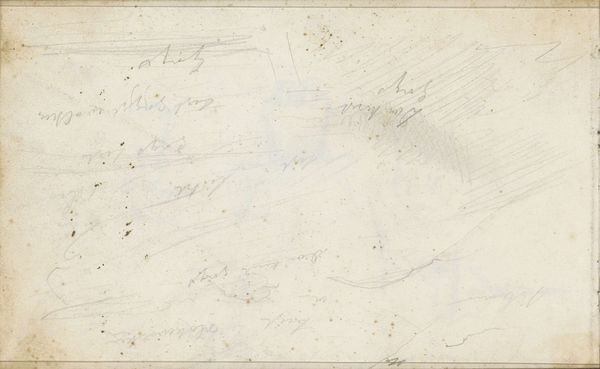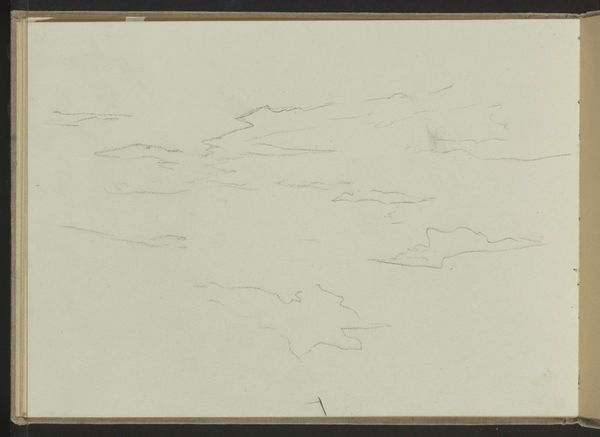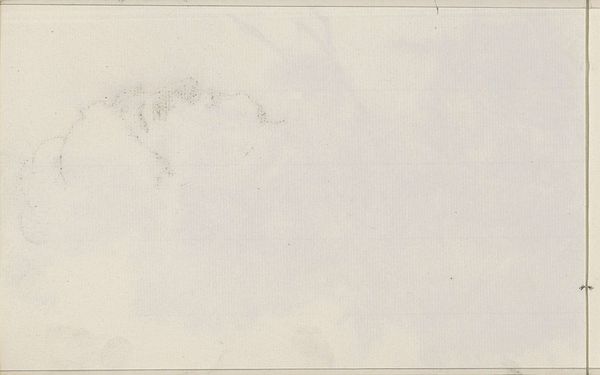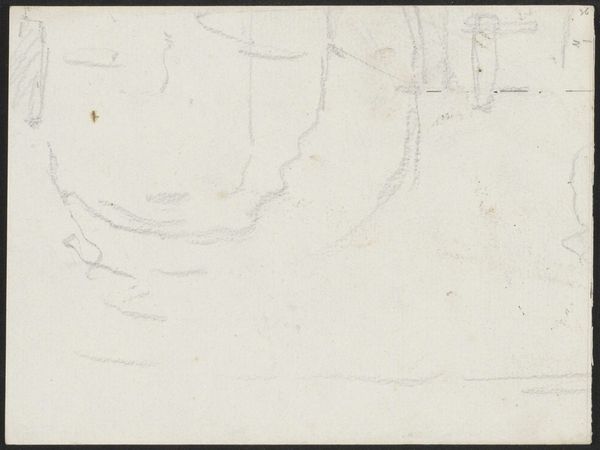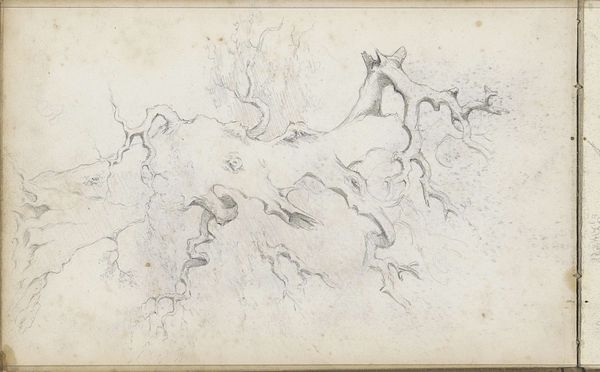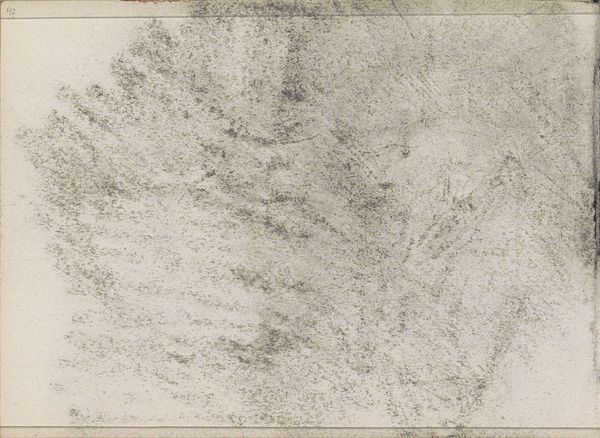
drawing, paper, pencil
#
drawing
#
landscape
#
paper
#
form
#
pencil
#
line
#
realism
Copyright: Rijks Museum: Open Domain
Editor: This drawing, "Wolken," created by Johannes Tavenraat between 1864 and 1880, simply captures clouds with pencil on paper. What interests me most is the minimalist technique; it feels almost like a scientific observation rather than a romantic depiction of nature. What can you tell me about the work through a materialist lens? Curator: Precisely. This unassuming sketch provides a lens through which we can view the industrialized landscape and its impact on artistic practice. Tavenraat's careful delineation of clouds using readily available, mass-produced materials – pencil and paper – speaks to the democratization of art production during the period. Do you see how the ease of access to these materials might have impacted artistic subjects? Editor: That’s interesting. Because these materials are so common, they change the subject. Suddenly, anyone could record this. Did this ease also contribute to a shift away from grand, historical paintings toward more commonplace scenes? Curator: Absolutely. The materiality informs the content. By focusing on something as transient and everyday as clouds, Tavenraat is engaging with the immediate environment in a way that connects the artist directly to his surroundings and, equally, made the process accessible to others in a rapidly industrializing society. Consider where the paper may have been made – what was that labor like? What kinds of systems afforded Tavenraat the privilege to represent a landscape now reshaped by similar industries? Editor: So, it’s less about the sublime and more about understanding the social and material conditions that allowed this work to exist. Curator: Exactly. The very act of choosing pencil and paper situates the artwork within a larger network of production, consumption, and labor that defines the 19th century. These "Wolken" become evidence, not just of the artist’s observation, but of a society transforming its relationship with both nature and art-making. Editor: I hadn’t thought about it that way before. It makes me consider all the unseen labor behind something that seems so simple. Curator: And in doing so, we begin to see how even the simplest sketch can reveal complex layers of meaning related to its production. It’s about broadening our definition of “art” and whose stories are made visible.
Comments
No comments
Be the first to comment and join the conversation on the ultimate creative platform.
